-
 Bitcoin
Bitcoin $116400
-1.69% -
 Ethereum
Ethereum $3731
2.87% -
 XRP
XRP $3.119
-1.00% -
 Tether USDt
Tether USDt $1.000
-0.04% -
 BNB
BNB $774.0
1.01% -
 Solana
Solana $181.0
-2.25% -
 USDC
USDC $1.000
0.02% -
 Dogecoin
Dogecoin $0.2314
-2.16% -
 TRON
TRON $0.3145
1.76% -
 Cardano
Cardano $0.8087
0.22% -
 Hyperliquid
Hyperliquid $43.01
0.68% -
 Stellar
Stellar $0.4247
-0.93% -
 Sui
Sui $3.758
1.42% -
 Chainlink
Chainlink $18.30
1.99% -
 Bitcoin Cash
Bitcoin Cash $551.4
5.66% -
 Hedera
Hedera $0.2482
3.08% -
 Avalanche
Avalanche $23.70
0.18% -
 Litecoin
Litecoin $115.1
2.44% -
 UNUS SED LEO
UNUS SED LEO $8.972
-0.36% -
 Shiba Inu
Shiba Inu $0.00001370
0.73% -
 Toncoin
Toncoin $3.146
0.74% -
 Ethena USDe
Ethena USDe $1.001
-0.03% -
 Uniswap
Uniswap $10.49
3.95% -
 Polkadot
Polkadot $4.044
1.42% -
 Monero
Monero $328.9
2.43% -
 Dai
Dai $0.9998
-0.03% -
 Bitget Token
Bitget Token $4.510
-1.10% -
 Pepe
Pepe $0.00001231
-1.68% -
 Aave
Aave $293.4
2.16% -
 Cronos
Cronos $0.1294
2.89%
How to deal with the monthly Bollinger breaking through the upper rail + the weekly RSI overbought + the daily line's long negative correction?
A monthly Bollinger breakout with weekly RSI overbought and daily negative correction signals caution—consider reducing exposure and tightening risk management.
Jul 24, 2025 at 08:42 am
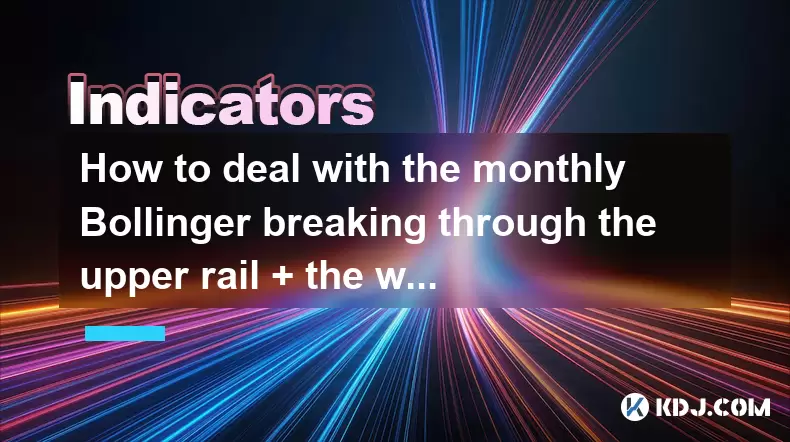
Understanding the Bollinger Bands Breakout on the Monthly Chart
When the monthly Bollinger Bands experience a breakout above the upper rail, it signals a significant and potentially unsustainable price surge. The Bollinger Bands consist of a moving average (typically 20-period) with upper and lower bands set two standard deviations away. A breakout on the monthly timeframe indicates that the asset has moved sharply beyond its historical volatility range. This kind of movement often reflects strong bullish momentum, but it can also suggest overextension. In the context of cryptocurrency markets, where volatility is inherent, such a breakout may precede a sharp reversal or consolidation phase.
Traders should closely examine volume and price action during this breakout. If the breakout is accompanied by high trading volume, it may indicate strong conviction. However, if volume is declining, the breakout could be a false signal or a "blow-off top." It's essential to cross-verify this signal with other timeframes and indicators, especially since monthly data moves slowly and may lag real-time market sentiment. The key takeaway is that a monthly upper rail breakout demands caution, not immediate action, due to the long-term implications of such a signal.
Interpreting Weekly RSI Overbought Conditions
The Relative Strength Index (RSI) on the weekly chart showing overbought conditions (typically above 70) reinforces the idea of market exhaustion. RSI measures the speed and change of price movements, and values above 70 suggest that the asset may be overvalued in the short to medium term. In crypto markets, RSI can remain overbought during strong uptrends, so it should not be used in isolation. However, when combined with a monthly Bollinger breakout, it strengthens the warning.
To analyze this properly:
- Check whether the RSI is forming bearish divergences — where price makes higher highs but RSI makes lower highs.
- Monitor for RSI rejection at the 70 or 80 level, which may indicate weakening momentum.
- Consider the broader market context — are major cryptocurrencies like Bitcoin or Ethereum showing similar patterns?
A weekly RSI above 70 does not guarantee a reversal, but it does suggest that upside momentum is stretched. Traders should prepare for potential profit-taking or consolidation, especially if lower timeframes begin to show reversal patterns.
Assessing the Daily Chart’s Long Negative Correction
A long negative correction on the daily chart — such as a series of red candles, declining volume on up moves, or failure to retest recent highs — indicates that short-term sentiment is turning bearish. This correction may manifest as a deep pullback, a bearish engulfing pattern, or a breakdown below key moving averages like the 50-day or 200-day MA.
Key aspects to evaluate:
- Identify the depth and duration of the correction. A 20% or deeper drop over 5–10 days is significant.
- Look for support levels where price might stabilize, such as previous resistance zones, Fibonacci retracement levels (e.g., 61.8%), or volume profile nodes.
- Observe candlestick patterns like dark cloud cover, evening star, or three black crows that may confirm bearish momentum.
If the daily chart shows a long negative correction while the monthly and weekly indicators are flashing overbought signals, the confluence suggests a high probability of continued downside or sideways consolidation. This is not a signal to short blindly, but rather to reassess risk exposure.
Strategic Risk Management Approaches
Given the confluence of a monthly Bollinger breakout, weekly RSI overbought, and daily negative correction, risk management becomes paramount. The goal is not to predict the exact top, but to protect capital and position for potential downside.
Recommended actions include:
- Reducing long exposure by taking partial profits, especially if entry was at lower levels.
- Setting trailing stop-loss orders just below key support levels or recent swing lows to lock in gains.
- Avoiding new long entries until at least one of the overbought signals resolves — for example, RSI drops below 70 or price re-enters the Bollinger Bands.
- Considering hedging strategies, such as buying put options (if available on the asset) or opening short positions in correlated assets.
It is critical to avoid emotional trading. The temptation to "ride the trend" during a monthly breakout can lead to significant drawdowns if the reversal accelerates. Discipline in position sizing and exit planning is more valuable than attempting to time the peak.
Multi-Timeframe Confirmation and Trade Planning
Before making any decisions, traders should align signals across all relevant timeframes. While the monthly, weekly, and daily charts suggest caution, the 4-hour or 1-hour charts may offer tactical insights into short-term reversals or continuations.
Steps to confirm the setup:
- Zoom into the 4-hour chart to check if price is forming lower highs or breaking below short-term trendlines.
- Watch for RSI divergence on shorter timeframes that may precede a deeper correction.
- Monitor on-chain metrics such as exchange inflows (indicating selling pressure) or whale movements for additional confirmation.
- Use volume profile to identify areas of high liquidity where price might reverse or accelerate.
If lower timeframes show rejection at resistance with declining volume, it supports the bearish case. Conversely, if price holds above a key level with strong volume, the overbought signals may persist longer than expected. Trade planning should include clear entry, stop-loss, and take-profit levels based on this multi-timeframe analysis.
Frequently Asked Questions
What should I do if the monthly Bollinger breakout is confirmed by volume but the weekly RSI is overbought?
Even with high volume on the monthly breakout, an overbought weekly RSI suggests caution. High volume can indicate distribution by large players. Consider reducing exposure rather than increasing it. Wait for price to stabilize within the bands or for RSI to cool down before reassessing.
Can the daily negative correction reverse even if higher timeframes are overbought?
Yes. Short-term rallies can occur within broader corrections. However, attempting to catch a falling knife is risky. Only consider counter-trend entries if there’s strong reversal confirmation — such as a bullish engulfing pattern with volume — and always use tight risk controls.
How do I adjust my stop-loss in this scenario?
Set your stop-loss below the most recent significant swing low on the daily chart. If using a trailing stop, adjust it below the 5-day low or a key moving average. Avoid placing stops too close to current price to prevent being stopped out by volatility.
Should I switch to short positions based on this setup?
Shorting based solely on overbought indicators is dangerous in crypto due to parabolic moves. If shorting, do so with small position size, clear technical confirmation (e.g., breakdown below support), and hedging in place. Prefer waiting for a retest of broken support or RSI reversal patterns.
Disclaimer:info@kdj.com
The information provided is not trading advice. kdj.com does not assume any responsibility for any investments made based on the information provided in this article. Cryptocurrencies are highly volatile and it is highly recommended that you invest with caution after thorough research!
If you believe that the content used on this website infringes your copyright, please contact us immediately (info@kdj.com) and we will delete it promptly.
- Pump, Bonk, Buyback: A Wild Ride in Crypto Town!
- 2025-07-25 19:10:12
- Punisher Coin, Dogecoin, Shiba Inu: Meme Coin Mania in the 2025 Crypto Landscape
- 2025-07-25 19:10:12
- Celestia's Token Control: Buyback & Staking Overhaul in Focus
- 2025-07-25 19:50:11
- Altcoins, Bitcoin, and Crypto Coins: What's Hot in the NYC Crypto Scene?
- 2025-07-25 19:55:52
- Litecoin Price Breakout Imminent? Rally Potential Explored!
- 2025-07-25 17:30:12
- Ether ETFs Surge, Bitcoin Wobbles: Is an ETH Breakout Imminent?
- 2025-07-25 16:50:12
Related knowledge

How to interpret that the KDJ D line is downward for a long time but the price is sideways?
Jul 25,2025 at 07:00pm
Understanding the KDJ Indicator and Its ComponentsThe KDJ indicator is a momentum oscillator widely used in cryptocurrency trading to assess overbough...

What does it mean that the KDJ indicator forms a double bottom at a low level?
Jul 25,2025 at 05:08pm
Understanding the KDJ Indicator in Cryptocurrency TradingThe KDJ indicator is a momentum oscillator widely used in cryptocurrency trading to identify ...
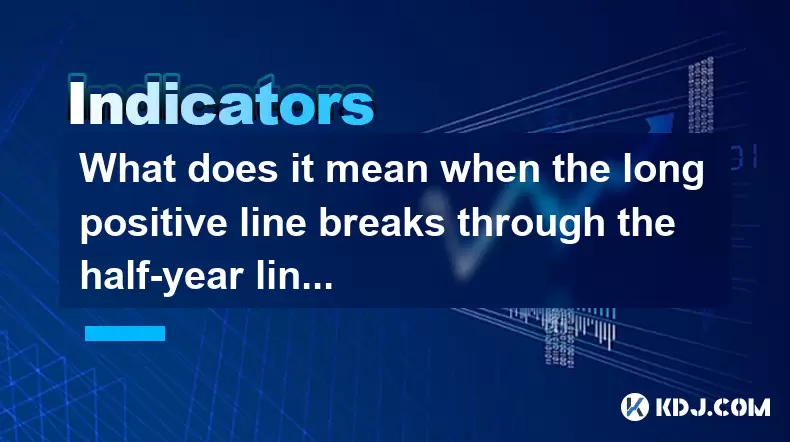
What does it mean when the long positive line breaks through the half-year line and then steps back?
Jul 25,2025 at 06:49pm
Understanding the Long Positive Line in Candlestick ChartsIn the world of cryptocurrency trading, candlestick patterns play a vital role in technical ...
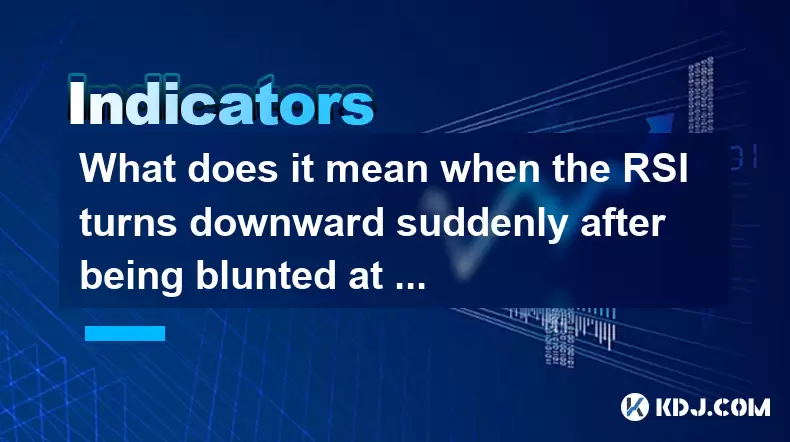
What does it mean when the RSI turns downward suddenly after being blunted at a high level?
Jul 25,2025 at 04:00pm
Understanding the RSI and Its Role in Technical AnalysisThe Relative Strength Index (RSI) is a momentum oscillator that measures the speed and change ...
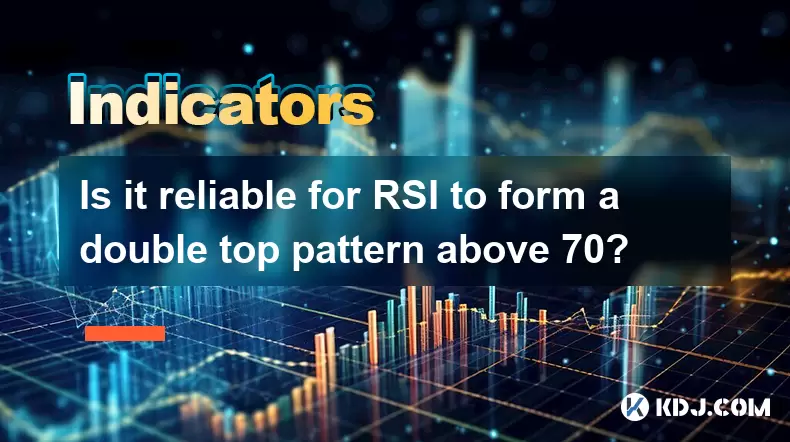
Is it reliable for RSI to form a double top pattern above 70?
Jul 25,2025 at 04:49pm
Understanding the RSI Indicator and Its Role in Technical AnalysisThe Relative Strength Index (RSI) is a momentum oscillator that measures the speed a...
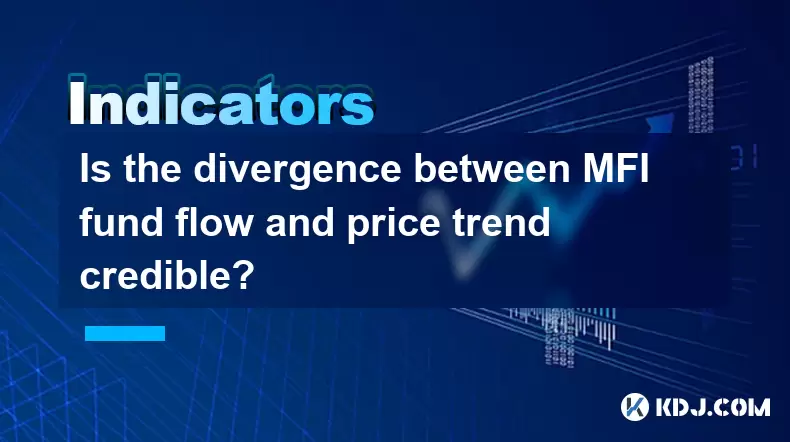
Is the divergence between MFI fund flow and price trend credible?
Jul 25,2025 at 12:01pm
Understanding MFI and Fund Flow in Cryptocurrency MarketsThe Money Flow Index (MFI) is a technical oscillator that combines price and volume to assess...

How to interpret that the KDJ D line is downward for a long time but the price is sideways?
Jul 25,2025 at 07:00pm
Understanding the KDJ Indicator and Its ComponentsThe KDJ indicator is a momentum oscillator widely used in cryptocurrency trading to assess overbough...

What does it mean that the KDJ indicator forms a double bottom at a low level?
Jul 25,2025 at 05:08pm
Understanding the KDJ Indicator in Cryptocurrency TradingThe KDJ indicator is a momentum oscillator widely used in cryptocurrency trading to identify ...

What does it mean when the long positive line breaks through the half-year line and then steps back?
Jul 25,2025 at 06:49pm
Understanding the Long Positive Line in Candlestick ChartsIn the world of cryptocurrency trading, candlestick patterns play a vital role in technical ...

What does it mean when the RSI turns downward suddenly after being blunted at a high level?
Jul 25,2025 at 04:00pm
Understanding the RSI and Its Role in Technical AnalysisThe Relative Strength Index (RSI) is a momentum oscillator that measures the speed and change ...

Is it reliable for RSI to form a double top pattern above 70?
Jul 25,2025 at 04:49pm
Understanding the RSI Indicator and Its Role in Technical AnalysisThe Relative Strength Index (RSI) is a momentum oscillator that measures the speed a...

Is the divergence between MFI fund flow and price trend credible?
Jul 25,2025 at 12:01pm
Understanding MFI and Fund Flow in Cryptocurrency MarketsThe Money Flow Index (MFI) is a technical oscillator that combines price and volume to assess...
See all articles

























































































